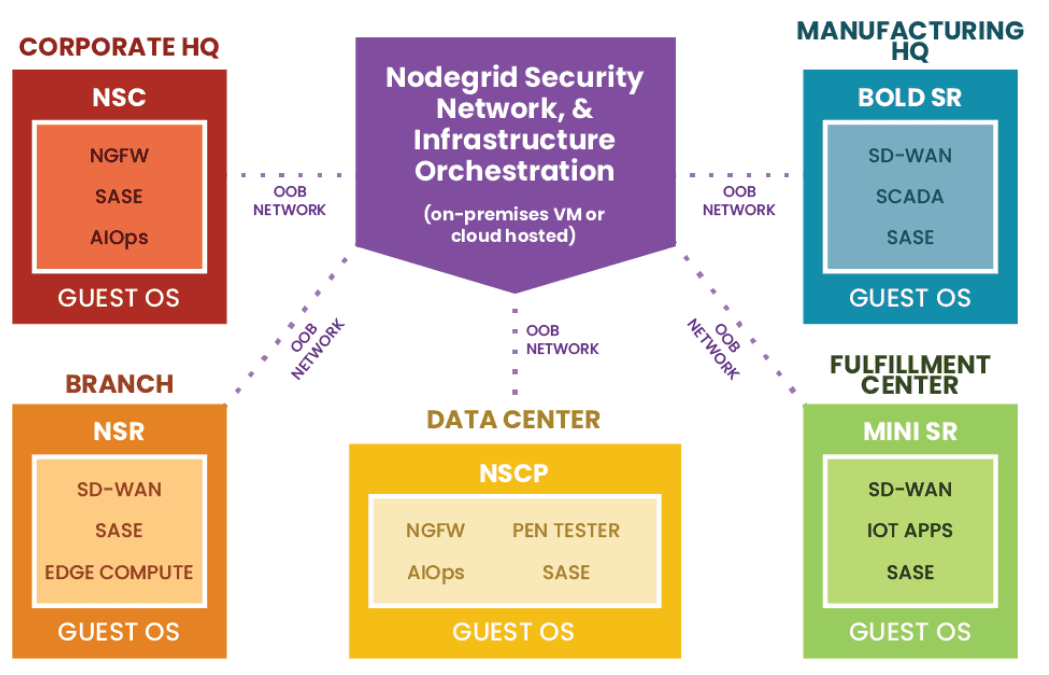
The typical enterprise network includes dozens or even hundreds of these security solutions cobbled together from a variety of vendors. Each solution needs dedicated hardware and operating systems to run on, deployed at every single edge, branch, and data center site. Plus, there’s typically little-to-no interoperability between security solutions, so network teams must learn, manage, and troubleshoot each one individually.
One approach to curbing this complexity is known as Security as a Service, which follows the SaaS model of delivering technology solutions as a subscription-based service. This blog defines Security as a Service, discusses the pros and cons of this approach, and provides an alternative solution for streamlined and scalable cybersecurity management.
What is Security as a Service?
Security as a Service (sometimes referred to as SECaaS) delivers cybersecurity as a subscription-based service. An organization outsources some or all of their security management to a third-party company, with varying levels of in-house involvement. For example, an organization may outsource their security monitoring to a SECaaS solution, but their own network admins will have access to customize the settings and monitor the dashboards.
Security as a Service may be an on-premises solution that’s installed on hardware in your data center, but it’s usually based in the cloud. SECaaS solutions are nominally vendor-neutral in that they’re typically capable of securing network infrastructure hardware from any vendor. However, they don’t usually integrate with other security solutions or monitoring platforms.
Security as a Service pros and cons
| Pros | Cons |
| Reduces the workload on in-house network admins and security analysts. | Reduces the control an org has over their security operations. |
| Makes it easier to upgrade to new security technologies. | Exposes organizations to shared vulnerabilities. |
| Scales easier than on-premises network security architectures | There’s little interoperability with other security solutions and platforms. |
Security as a Service outsources cybersecurity to a third-party, which frees up smaller network teams to focus on more profitable technology initiatives. However, that also means organizations have less control over their security operations, which makes things like data privacy compliance more challenging.
The SECaaS model allows companies to take advantage of new security technologies with fewer up-front costs, so they can stay at the forefront of cybersecurity and potentially avoid emerging threats. For example, an org could deploy Okta for single sign-on management and Proofpoint for advanced email security without purchasing additional hardware or committing to a fixed number of software licenses. On the other hand, SECaaS can also potentially expose organizations to shared vulnerabilities if one of their other customers or applications is breached.
One of the biggest benefits of Security as a Service is scalability – organizations can easily add new branches without needing to deploy additional hardware. However, since Security as a Service doesn’t typically integrate with other solutions for security, monitoring, and orchestration, complexity still becomes a major issue as organizations scale up and out.
While Security as a Service can be helpful for smaller organizations looking to simplify their network security operations, vendor lock-in prevents it from completely solving the problem being faced by enterprise network teams. What’s really needed is a single, streamlined platform from which to orchestrate every aspect of network security and management.
Security with ZPE’s Services Delivery Platform
ZPE Systems takes a platform-based approach to security management. ZPE’s powerful, vendor-neutral Nodegrid hardware and software serve as the platform to host all the apps and services required to manage and secure a complex enterprise network. That means organizations don’t have to give up control in order to streamline their operations.

For example, Cloudflare provides a great SECaaS SASE and ZTNA solution, but the problem is that many devices (such as printers, cameras, and IoT sensors) can’t run the Cloudflare agent. To solve this problem, you can deploy a Nodegrid Net Services Router (NSR) at each site to directly host the Cloudflare agent. The NSR can then extend the Cloudflare One SASE/ZTNA solution to any connected devices, overcoming vendor lock-in and eliminating the need for additional servers and OS licenses.
The hardware components of the Services Delivery Platform hook into ZPE’s vendor-neutral management software, which you can host on-premises or access through ZPE’s cloud. This software serves as the orchestrator for the entire architecture of connected solutions. In addition to managing the apps deployed to Nodegrid devices, you can use ZPE’s platform to integrate tools hosted elsewhere. This creates a unified platform that streamlines security, network, and infrastructure orchestration and provides truly holistic coverage.
Security as a Service attempts to simplify network security management, but it fails to provide a truly streamlined environment. Contact ZPE Systems today to learn more about overcoming those limitations with the Services Delivery Platform.
Want to learn how to simplify network security management?
Contact us today or visit our products page to discuss how ZPE Systems Nodegrid can simplify your enterprise networking needs.
